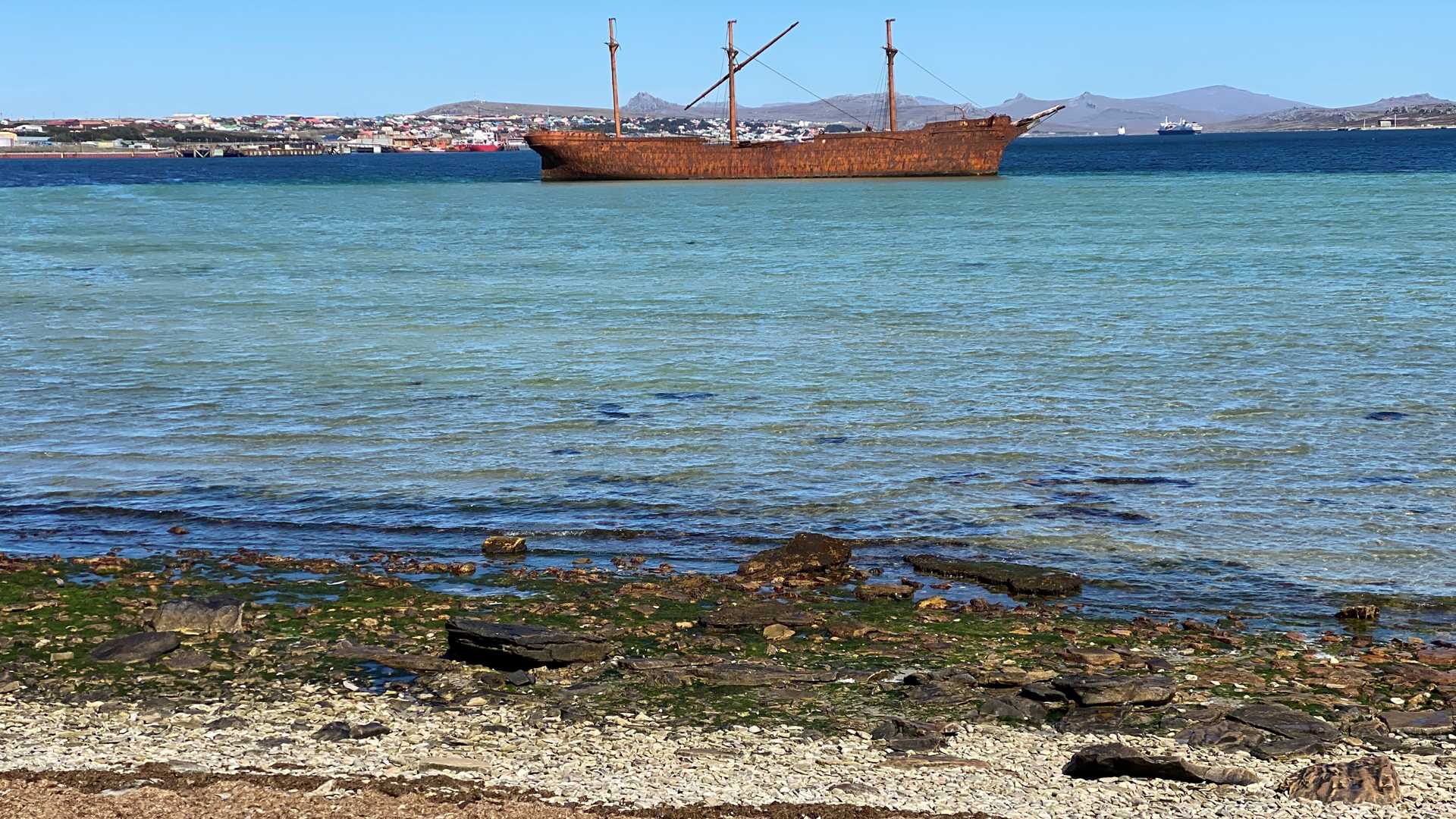This morning, National Geographic Explorer entered the incredible harbor of Stanley on East Falkland Island with bluebird conditions. After breakfast, we departed for our chosen activity of the morning: a hike up Mount William, a visit to a sheep farm and a hydroponic farm, or a tour of the greater Stanley area.
Stanley became the capital of the Falklands in 1845 and is named after Edward Stanley, the British Secretary of State for the colonies when the capital was founded. In the mid-19th century, Stanley was a port of refuge for ships that were damaged as they rounded Cape Horn. The town grew as a port specializing in ship repairs. By the start of the 20th century, the scene changed as ships were more soundly built, many of iron, and most had steam power. Ship repair was no longer as necessary or as profitable. In 1914, the Panama Canal opened and much of the traffic around Cape Horn (and the Falklands) fell away.
Walking along the waterfront, the amazing whalebone arch in front of the church caught our attention. The jawbones were originally brought from the South Shetland Islands in 1922 as a gift to the Falkland Islands government. Erected in 1933 to mark a hundred years of British administration, the whalebone arch consists of four unusually large blue whale jawbones. Each jawbone is over 20’ tall with the lower 3’ embedded in the ground.
In 1982, Argentine troops occupied Stanley for around ten weeks during the Falklands War. When Argentina finally surrendered, there were 900 fatalities and 25,000 landmines laid. During recap, naturalist Eric Guth shared a wonderful account of his time spent documenting the de-mining of Stanley. He shared about his experience with people from Zimbabwe who were hired to find and successfully remove all the landmines.
The Falkland Islands exceeded our expectations. We processed our encounter and our photos as we headed to the Sub-Antarctic Island of South Georgia.







